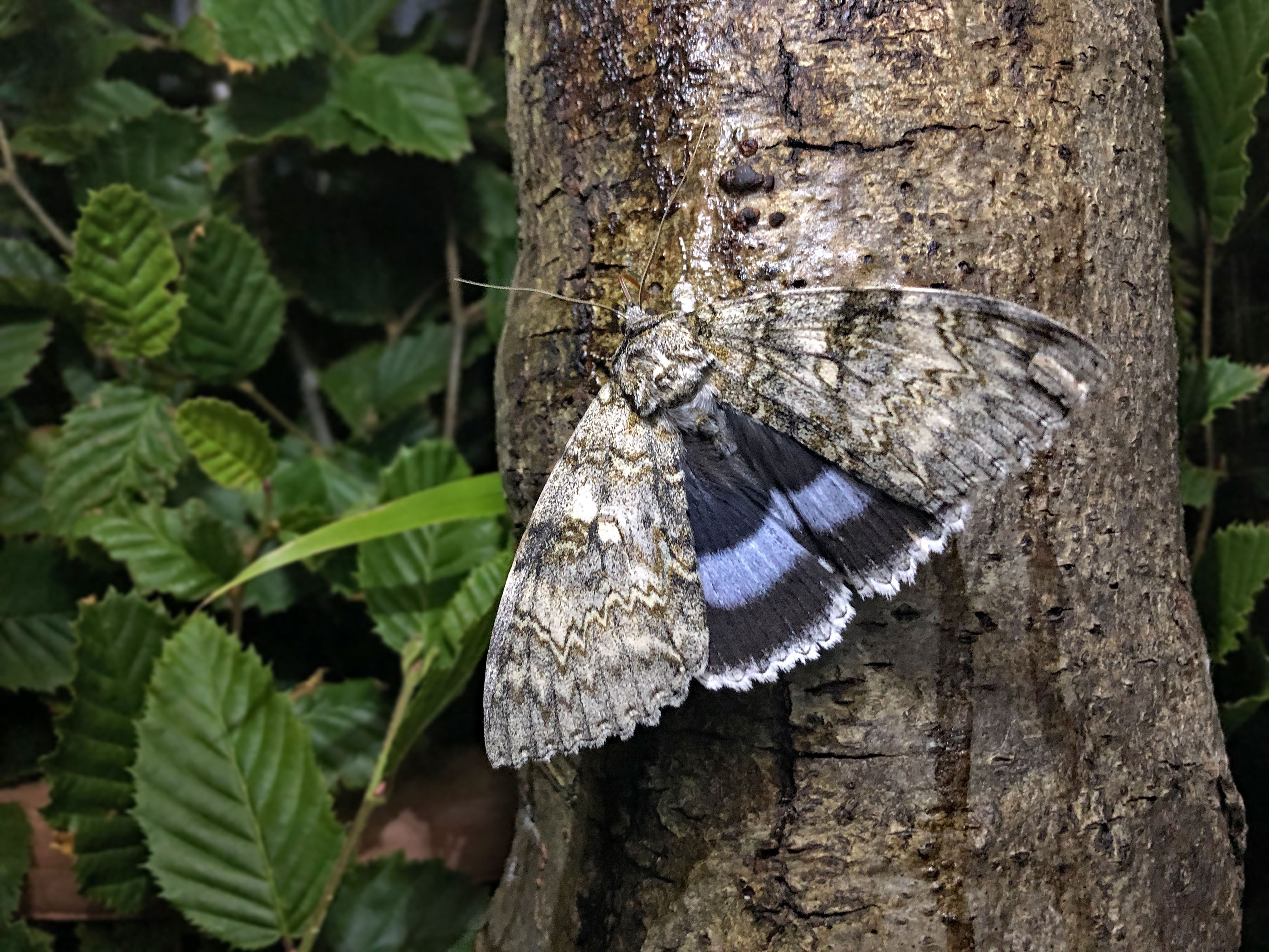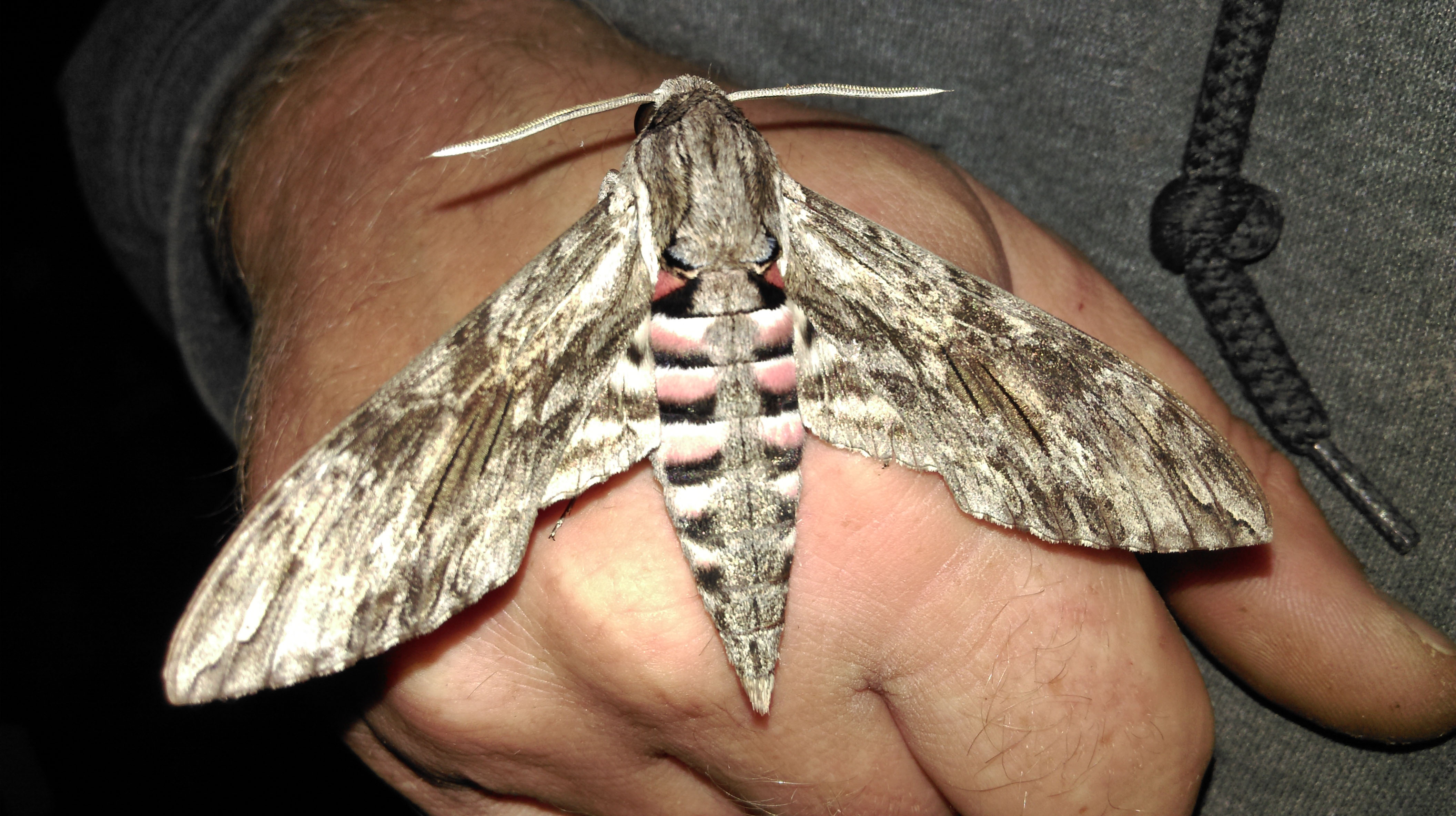
Numerous recent sightings of a moth that became extinct in the UK in the 1960s, suggest that it has recolonised and is now breeding across southern Britain.
The Clifden Nonpareil, whose name means ‘beyond compare’, is one of the largest and most spectacular moths native to our shores.
With a wingspan that can reach almost 12cm and a bright blue stripe across its black hindwings (which gives rise to an alternative name of the Blue Underwing), this species has long been regarded as a holy grail among moth enthusiasts.
Immigrant moths from continental Europe appear to have re-established breeding colonies of this impressive insect in recent years, in south coast counties of England.
People are being asked to look for this moth and record any sightings as part of the annual Moth Night, an event run every year by Atropos, Butterfly Conservation and the Centre for Ecology & Hydrology. This year the event celebrates its 20th anniversary.
As part of this coming Moth Night on 26-28 September 2019 dedicated moth recorders and members of the public are being asked to survey moths and to submit their sightings via the website. Public events are also being held across the country to raise awareness of the importance and beauty of moths.
Moth Night founder and editor of Atropos, Mark Tunmore, said: “September is a special time for studying moths in the British Isles with a colourful range of resident species mixing with more exotic species from Europe or even North Africa as warm air currents sweep them northwards. Already this year we have received reports to our migrant insect news service, Flight Arrivals, of Clifden Nonpareil sightings from Cornwall, Devon, Sussex, Warwickshire, Suffolk, Dorset, Kent, Norfolk, Somerset and Northamptonshire.
“Some of these are likely to be immigrants and some part of the recently established resident populations. When we started Moth Night 20 years ago this moth was a very rare immigrant but it is now becoming familiar to moth enthusiasts across southern Britain. This illustrates just how quickly change can take place and that’s why moths are such a fascinating group of insects to study.
“Coming at the peak of the Clifden Nonpareil season, Moth Night 2019 is a fantastic opportunity to map the current range of this species in Britain.”
Another exciting migrant species being recorded this autumn is the Convolvulus Hawk-moth. This species has an unusually long proboscis (tongue) which allows it to feed on tubular flowers like tobacco plants. Participants in Moth Night are being asked to be on the lookout for both the Convolvulus Hawk-moth and the Clifden Nonpareil in order to help scientists learn more about their increasing numbers in the UK.
Richard Fox, Associate Director of Recording and Research at Butterfly Conservation said:
“Moth Night is a wonderful opportunity to get face-to-face with the UK’s magnificent moths including, if you are really lucky, the Clifden Nonpareil, and to contribute important data.
“Moth Night is running from 26-28 September this year and we really want to hear from anyone who has seen a Clifden Nonpareil, Convolvulus Hawk-moth or encountered any exciting migrant moths or even recorded some of the spectacular local species that fly on autumn nights.
“The Clifden Nonpareil is a fantastic addition to our wildlife, and it is great to know that it is resident again in the UK, after an absence of 40 years or so. Its caterpillars feed unnoticed up in the canopies of Aspen and poplar trees, so the adult moths are the best indication of how widely-established this species now is.
“This year, the Clifden Nonpareil is turning up all over southern Britain, in the Midlands, East Anglia and Wales, in Ceredigion and Monmouthshire, as well as in south coast counties. There’s never been a better chance of a thrilling encounter with this impressive insect.”
Dr Marc Botham, an ecologist at the Centre for Ecology & Hydrology, said: “Moth Night provides the perfect opportunity for people of all experiences to go out and record moths, with some fantastic species to look out for. Many moths are benefiting from climate change, being able to withstand the increasingly milder weather in particular over the winter months.
“Records collected on Moth Night will help contribute to our fantastic wealth of data on moths and other insect groups and help us to see how climate change and other drivers are affecting their populations in the UK.”
Experts would love to hear of any moth sightings, so please submit these to www.mothnight.info and keep an eye on where the Clifden Nonpareils have been spotted so far at www.atropos.info/flightarrivals
People can also read more about the fascinating history of the Clifden Nonpareil in the recently published issue of Atropos – see www.atropos.info/magazine for details.
Events can be found at www.mothnight.info



